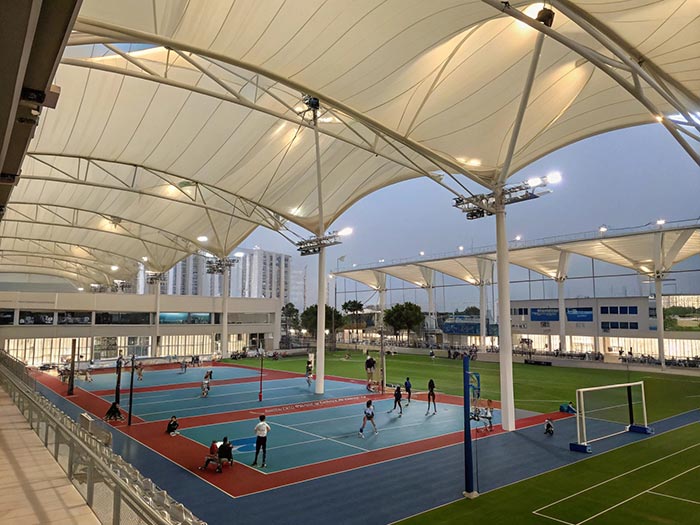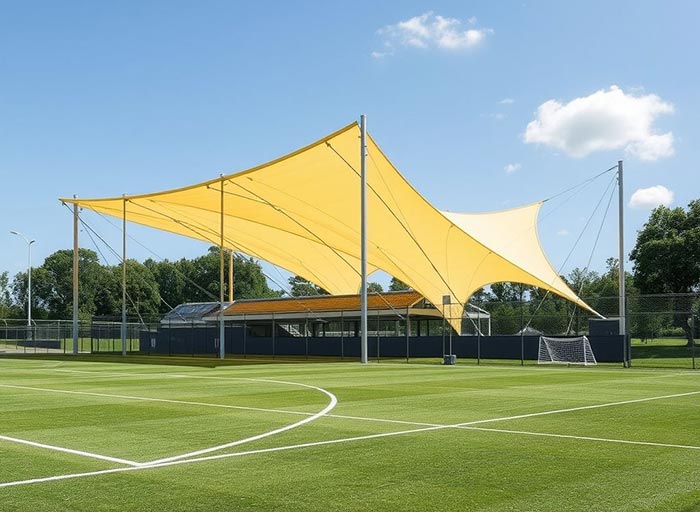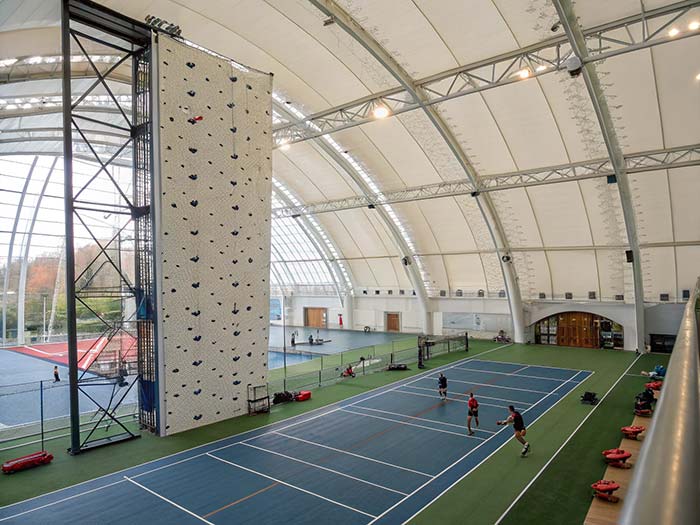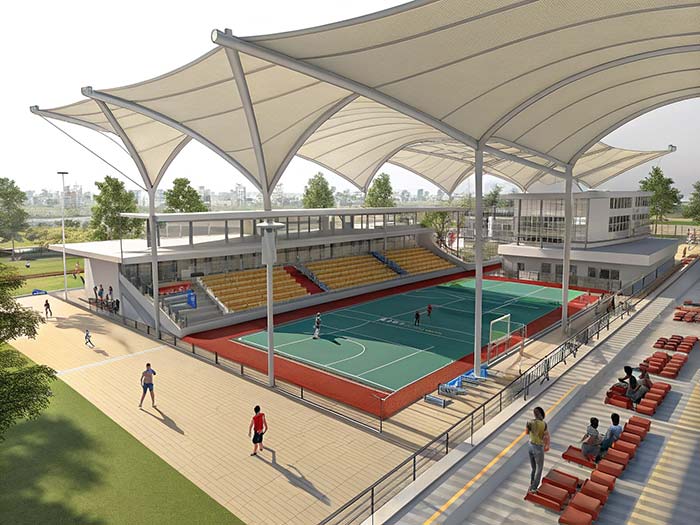Modular tensile sports arenas: build anywhere, anytime
Amid the surge in demand for global events such as the World Cup and Olympics, as well as the trend towards urban space intensification, the tensile sports arenas are revolutionizing traditional sports architecture with its modular design. Through the integration of tensile structure and tension fabric building, this rapidly deployable arena solution is becoming the preferred choice in the fields of sports, exhibitions, and emergency response.

1. Structural form
The tensile sports arenas use prestressed steel cable truss as the core skeleton, covered with high-strength PTFE/PVC membrane material (UV resistant, self-cleaning), combined with modular connection nodes, to achieve the following innovations:
- Span freedom: No column design, maximum coverage of 200 meters across areas (such as Qatar World Cup Fan Square).
- Quick assembly: prefabricated units can be used to build a venue for 5000 people in 48 hours (saving 70% of the construction time compared to traditional buildings).
- Intelligent adaptation: Dynamic load algorithm adjusts tension balance in real time to resist level 12 strong winds and snow accumulation (certified by EN 1991).

2. Global application scenarios
Major events:
- Saudi NEOM Smart City Temporary Football Stadium (detachable and reusable for 5 tournaments).
- Paris Olympic Beach Volleyball Arena (converted into a community sports center after the competition).
Urban elastic space:
- New York High Line Winter Skating Rink (demolished at the end of the season to restore green space).
- Singapore F1 Night Stand (Annual Build Demolition Cycle Mode).
Emergency response:
- The temporary gymnasium after the earthquake in Türkiye (a refuge for 10000 people in 72 hours).
- African Ebola Epidemic Area Mobile Testing Center (Negative Pressure Membrane Isolation System).

3. Why choose the tensile sports arenas?
- Cost effectiveness: The construction cost is only one-third of that of concrete venues, and the energy consumption for operation and maintenance is reduced by 60%.
- Eco friendly: 95% of materials are recyclable, reducing carbon footprint by 45% (LEED certification bonus).
- Scenario extension: Supports customized modules such as LED integrated lighting, air purification film, intelligent temperature control, etc.
4. Market prospects driven by data
According to the Global Market Insights report, the global tensile structure market will reach $8.2 billion in 2023, with sports applications accounting for over 35%. In the next five years, the modular tension arena will explode in the following areas:
- Emerging economies: India/Southeast Asian urban sports complexes (policy driven).
- Technology integration: live streaming of metaverse events+physical tension venue linkage (such as Meta’s collaboration with Los Angeles holographic stadium).
- Climate adaptability: hurricane resistant tensile structure (with a 240% increase in demand in the Caribbean region).

Conclusion
The tension sports arena is not just about architectural innovation, but also represents a sustainable global sports ecosystem. Whether it’s the World Cup fan areas in the desert or the community sports fields rebuilt after disasters, this on-demand solution is redefining the way humans interact with sports spaces.